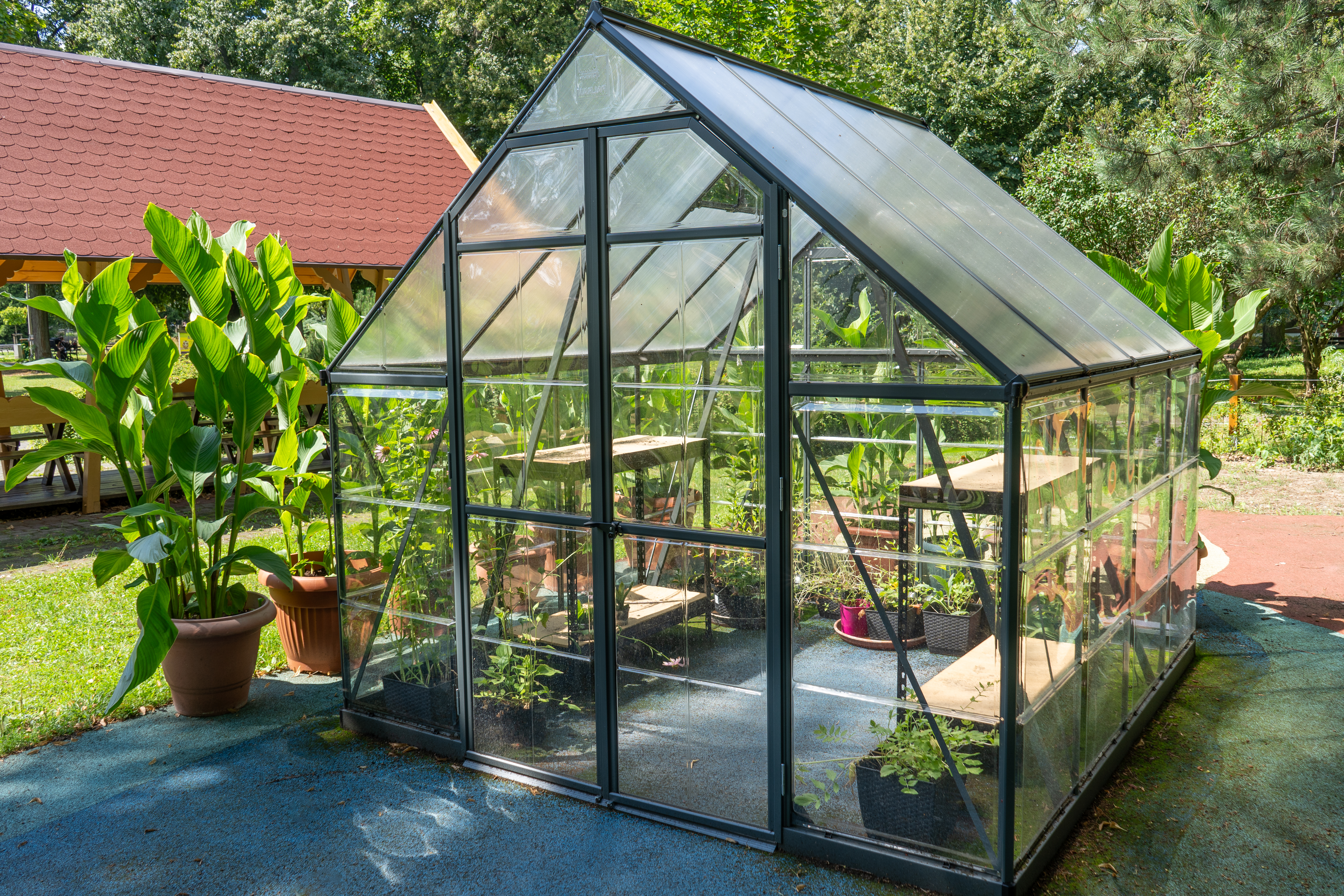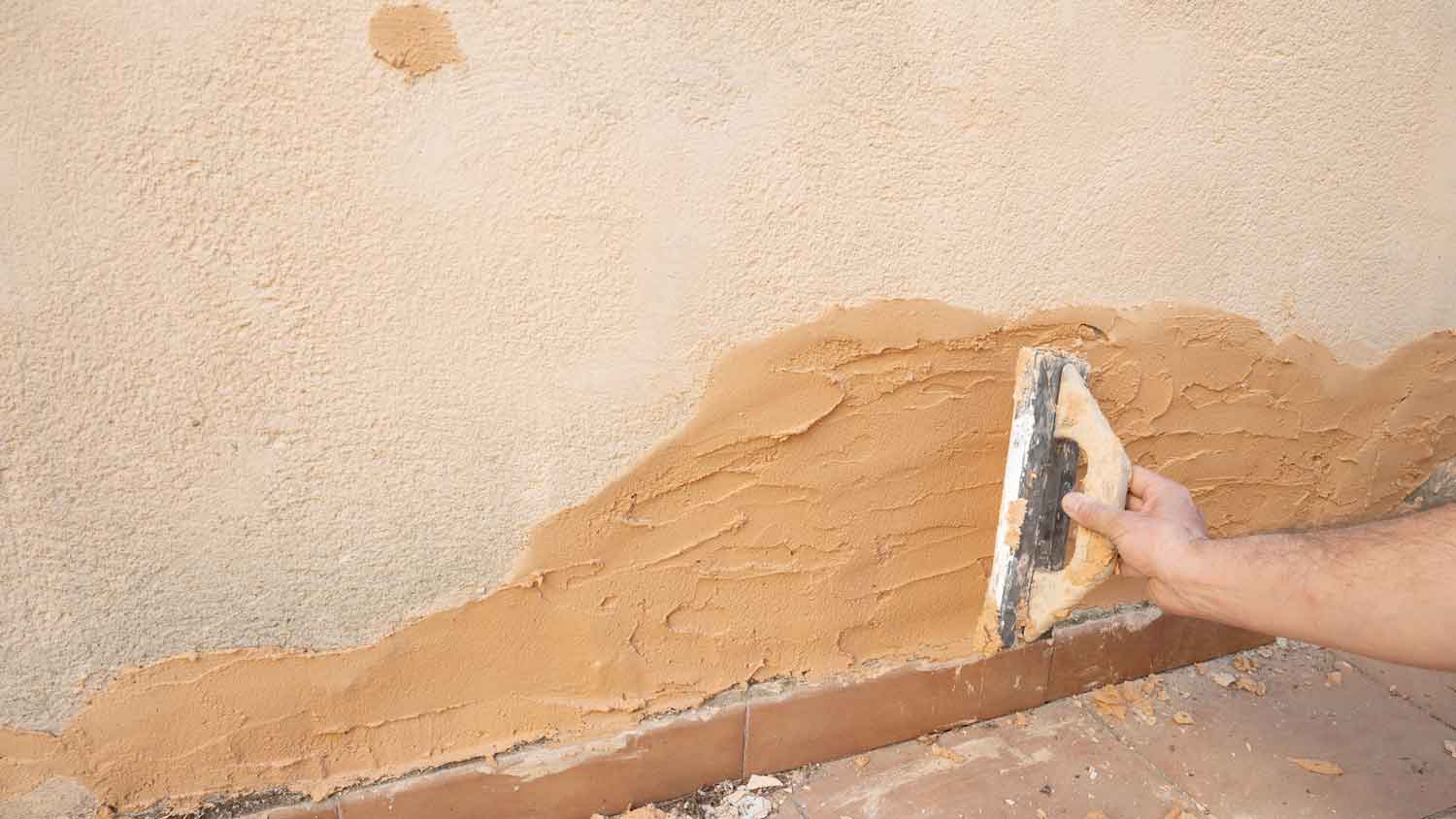
While it isn't easy to expand your property, you can consider building up. The cost of adding a second story has quite the range. We'll break it down here.
You’ll impress the pros with this home exterior jargon


It sometimes feels like contractors and people who work in the home improvement industry speak another language. With all the home-building jargon, it’s easy to get lost in conversation. If you’re planning on fixing up your home’s facade, you’ll come across an array of new terms referring to different types of roofing, siding, windows and doors that you may not understand. Fear not. Read on to brush up on these important home exterior terms, so you can feel confident communicating your needs during your next home improvement project.
Whether you need to clean, patch or replace your roof, knowing these terms for parts of a roof will help you out:
Abutment: A strip of metal that helps to seal a roof, preventing moisture from getting between the wall and roof covering.
Blistering: Bubbles that form on an older roof, often due to moisture exposure.
Cupola: A small structure on the top of a building, originally designed for natural light or ventilation within a building.
Decking: Plywood used to cover the roof's frame. Term may be used interchangeably with sheathing in some cases.
Dormer: A structure that projects from a pitched roof and typically houses a window.
Downspout: A vertical pipe attached to a roof connected to sloped gutters; designed to maximize drainage.
Eave: The angled portion of a roof that extends past the building’s exterior wall.
Flange: Metal installed around plumbing fixtures on a roof to prevent moisture/leaks.
Flashing: Metal stripping installed where the roof meets a vertical surface or creates a valley to direct water away.
Louvers: A newer concept for roofs, roof louvers are horizontal slats (often controlled by a remote) that allow you to ventilate your roof.
Mats: Term used for many shingle products; often for rolled mats or the first shingles that lay over the decking.
Sheathing: Wooden boards that are attached to roof trusses and joints to create the overall foundation of the roof that shingles or other roofing materials will be installed on.
Soffit: The area located under the overhang of a roof, which usually is covered in a finishing material like wood or fiber cement.
Stack vent: A vent pipe attached to the roof that's used for the ventilation of sewer drainage.
The trim around your windows, doors, and roof provides protection and aesthetic benefits for your home. These terms will help you differentiate exterior trim around your house!
Apron: The decorative trim installed below the window.
Belly band: Decorative trim that runs horizontally across the exterior of a house.
Casing: The trim installed around a door opening.
Cornice: The decorative trim located where the wall meets the roof on the exterior of a building.
Frieze board: A piece of trim that is installed under a roof’s eave, between the soffit and top of a wall.
Exposed fascia: Also known as the “transition trim,” it’s the piece of molding that runs along the lower edge of the roof.
Hidden fascia: Harder to see but just as important, hidden fascia in your roof ties truss tails together and provides reinforcement.
Grid/grille: A piece of trim that normally visually separates glass. Sometimes used for decoration, but can also be used to reinforce a window.
Your siding is a vital part of protecting your home and adding curb appeal. Here are some siding terms to know:
Belly band: Decorative trim that runs horizontally across the exterior of a house.
Board and batten: Vertical boards that are joined by vertical strips to create siding on the exterior of a house.
Cladding: The general term used to describe any type of exterior siding of a building.
Clapboard: Horizontal, overlapping wood plank siding that is installed on the exterior of a house.
Exposure: The visible space below adjacent sections of siding.
Face: The visible part of siding when looking at your home from the curb or lawn.
Flashing: Similar to a roof's flashing, siding flashing is a thin strip of metal or material designed to keep water out of vulnerable sections.
Gable: Located under the eaves of a roof, the triangular portion of the exterior wall.
Lap siding: Another term for clapboard (described above).
Panel siding: Long, tall, often textured boards commonly installed with batten strips.
Weep holes: On vinyl siding, these are small holes placed at the bottom of the home that promote good drainage.
If eyes are the windows to the soul, then your windows are the eyes of your home (right?) Regardless of your specific type of windows, here are terms to know:
Awning: An overhang attached to an exterior wall that provides shade and protection over windows and doors.
Bay window: Like a small bay protruding from an ocean, a bay window is a small section protruding outward from a house that is encased in windows.
Casement window: A window that opens vertically, much like a door.
Frame: Wood or vinyl attached to the home that reinforces a window's strength and structural integrity.
Header: The beam that spans the top of a window opening.
Jambs: Vertical wood or vinyl slats on the sides of window frames.
Louver: Blinds or shutters with horizontal slats that open to allow for air circulation.
Mullions/grilles: Decorative pieces that divide a window horizontally.
Rail: Horizontal wood or vinyl in the middle of the window separating the upper/lower rails.
Sash: The section(s) of a window used to hold glass in place. Varies depending on the design of the windows you purchase.
Shutter: Attached to the exterior of the home, a covering used to protect windows from the elements.
Whether you’re picking a new front door or repairing your old one, you should know these door terms:
Jamb: The two vertical inside sections of the door frame.
Lintel: The horizontal structural beam that spans the top of the door.
Mullion: Like windows, door mullions are decorative and designed to hide aesthetic flaws in a doorway between glass or panes.
Portico: A porch at the entrance to a building that is supported by large columns.
Rough opening: The space 2 inches around a door's frame, usually used for pre-built door units.
Side lights: The narrow windows that flank the sides of a front door.
Sill: The bottom part of a door frame.
Transom: A decorative window above a door.
Trim: Wood or crown molding placed around the edge of a door to add aesthetic value and possibly increase property value of doors.
I am writing this review for my sister as her sunroom is not yet finished and she is afraid of retaliation if she writes the review. My sister contacted ABC of Nebraska well over 1 year ago to build a sunroom for her. ABC of Nebraska FINALLY started the project in November, again, over 1 year...
They have cleaned my house once. These ladies were punctual and immediately ready to clean my home. Both my husband and I were satisfied with how the house looked when they finished. Enough so we have scheduled them again.
I have a home built in 1920 and the insulation was old, thin, and the attic contained rubble and debris from an old roof replacement years ago. Thompson and Thompson 3rd Generation was very prompt, professional, and completed the job quickly and correctly. They cleaned up my attic and made it...
Awesome, Jenny and her team are fantastic. In addition to the team cleaning our home, the main office service and support is great. They make life much easier for our family!
Installer was owner Ric Barner- Ric scheduled time to meet with my wife and provide various samples of woods and stains and finishes for her to look at and choose from - this was probably the longest part of the process - once she had made her selection we settled on a date to begin and Ric...
I have used this company on 2 different projects. Both were single family homes with basements that had major water intrusion issues. The owner, Steve, is very knowledgeable and professional, with a lot of experience in this space despite being a fairly new company. The first project was...
From average costs to expert advice, get all the answers you need to get your job done.

While it isn't easy to expand your property, you can consider building up. The cost of adding a second story has quite the range. We'll break it down here.

The cost to rebuild a house after a disaster or demolition depends on the house size, features, and more. Learn what affects the cost to rebuild a house.

Discover the cost to build a greenhouse. Learn about average prices, key cost factors, and how to save on your greenhouse project.

Knowing the differences between a barndominium vs. modular home opens your options regarding affordable abodes built for real living.

Discover how much it costs to build a cob house, including average prices, cost factors, and tips to help you plan your sustainable home project.

It’s exciting to start planning your dream home, but first, you need to find the right professional to manage the work. Discover who to hire to build a house.